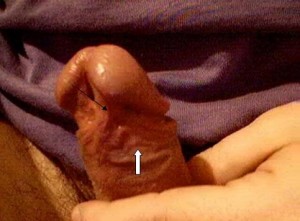Why Does It Happen?
There are thought to be several reasons why hypospadias occurs. In some cases it is passed down from a male relative (often the father) to the son, so it is classified as hereditary. In other families, an uncle or a grandfather may have hypospadias. However, this family occurrence is seldom known or openly discussed so the genetic inheritance cannot be easily established.
A second, but not very common, cause appears to be the side-effects of drugs (that includes illegal drugs, and medicines or pills) which the mother has taken while she is pregnant or trying to become pregnant. Drugs that have been linked to a higher occurrence of hypospadias include:
- The anti-epilepsy drugs, Valproic acid and Phenytoin;
- the hormone Progesterone, often given to mothers as part of IVF treatment;
- DES (Diethylstilbestrol) prescribed up until the 1970s to prevent miscarriage
- Clomiphene, a drug used to induce ovulation during IVF treatment;
- Loratidine, an anti-allergy drug, though the evidence now seems to suggest that Loratidine is not a risk factor in hypospadias.
Also, the frequency of hypospadias is higher in boys born to mothers addicted to cocaine.
There may of course be other drugs which can affect the development of a boy’s penis while he is in his mother’s uterus, but which have not yet been shown to cause hypospadias.
A third cause of hypospadias may be the increase in levels of man-made chemical pollutants in the world around us. This increase may also explain why hypospadias is becoming more common in our society. Some chemicals like pesticides, fungicides and industrial pollutants are suspected of causing an increased level of hypospadias as well as other birth defects
A fourth cause of hypospadias is hormonal. If either mother or children are exposed to high levels of female hormones, or if there is something wrong with the baby’s own hormone system, the baby may develop hypospadias. Doctors have known for a long time that a small proportion of cases of hypospadias are caused by a male child’s penis not developing properly in response to the testosterone produced by his testicles during pregnancy.
There are probably other causes of hypospadias, but at the moment we cannot always be sure what has caused a particular case.
How Does This Develop?
The tube inside the penis through which urine and semen pass is formed during the later stages of pregnancy. It forms by the fusion of two parts: one becomes the shaft of the penis and another forms the head of the penis. As the two parts fold and fuse together, the process may stop too early, at any part of the tube, leaving the opening somewhere on the underside of the penis rather than at the tip of the head of the penis.
What Is Chordee?
Chordee is downward bend of the head of the penis at the point where it meets the shaft, sometimes more noticeable on one side of the penis than the other.
Sometimes this curve is mild and sometimes it can almost be a 90 degree downward bend. Chordee can occur in men who do not have hypospadias. However, if chordee is present, hypospadias is often also present.
How Often Does Hypospadias Happen?
Studies done recently at the Center for Disease Control in the United States and research in other western countries suggest between 1 in 125 and 1 in 300 male babies have hypospadias, so it is quite common. In fact, this places hypospadias alongside cleft lip and palate as the leading birth defect in boys.
Hypospadias occurs most often in white males, less frequently in black males and even less often in Hispanic males. It seems to be getting more common, though: for example, a 1993 study in the United States suggested that hypospadias was twice as common as it was in 1968.
If a male family member has the condition, there is an increased risk that his male children will be born with hypospadias.
How Many Types Of Hypospadias Are There?
Hypospadias is classified in a variety of ways. The most simple is a classification as mild, moderate and severe, which can also be called first, second and third degrees of severity.
This classification system is based on the location of the external opening for urine and semen (the urethral meatus). In mild or first degree hypospadias, the opening is on the underside of the head of the penis or where the head and the shaft meet. This accounts for about 80% of cases.
Moderate or second degree hypospadias (15%) occurs when the hole is actually on the shaft of the penis, somewhere between the junction of head and shaft, and the lower part of the shaft. Severe or third degree hypospadias occurs when the hole is located on the lower part of the shaft just in front of the testicles or is located behind the testicles, between them and the anus.
In a few cases (6%), the hole may be quite large, and near the end of the penis (which may have a complete foreskin). This is called megameatus.
Coronal Hypospadias
Note the large urethral opening (the urethral meatus) on the underside of the glans, i.e. the head of the penis, in a cleft between the two lobes. This is the mildest form of hypospadias. In this case, the foreskin is complete and is attached on one side of the shaft, where marked, to the left lobe of the glans. But in many cases of hypospadias the foreskin forms an incomplete hood which only covers the back part of the glans.
Some men with the condition have a penis which is smaller than average either when flaccid or when erect, or both. In one piece of research, over half of a group of adolescent boys with hypospadias were found to have a penis much smaller than average.

